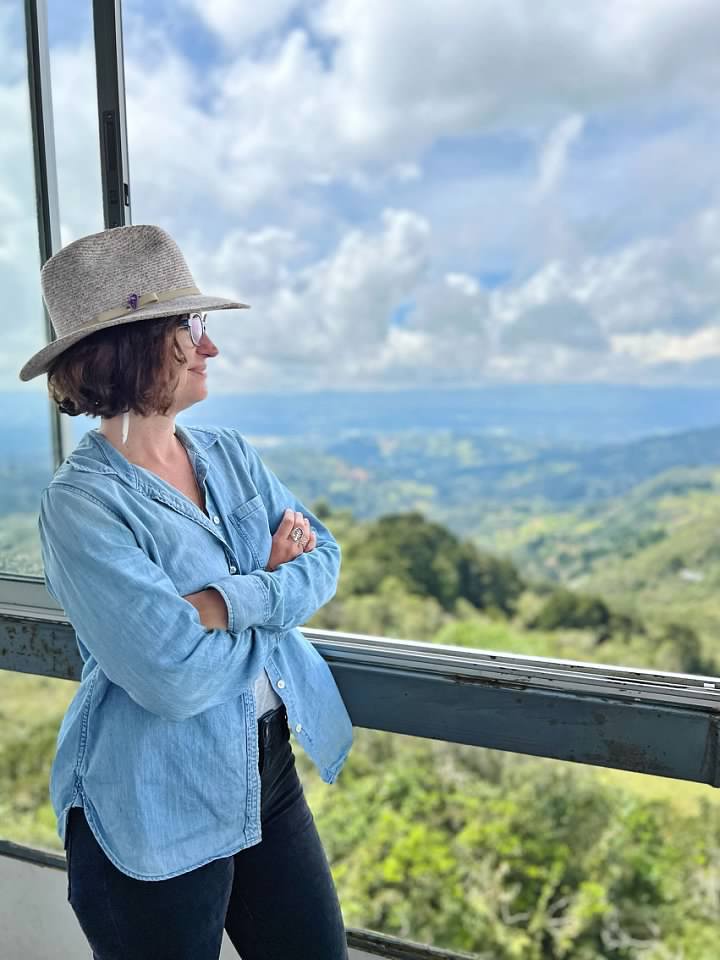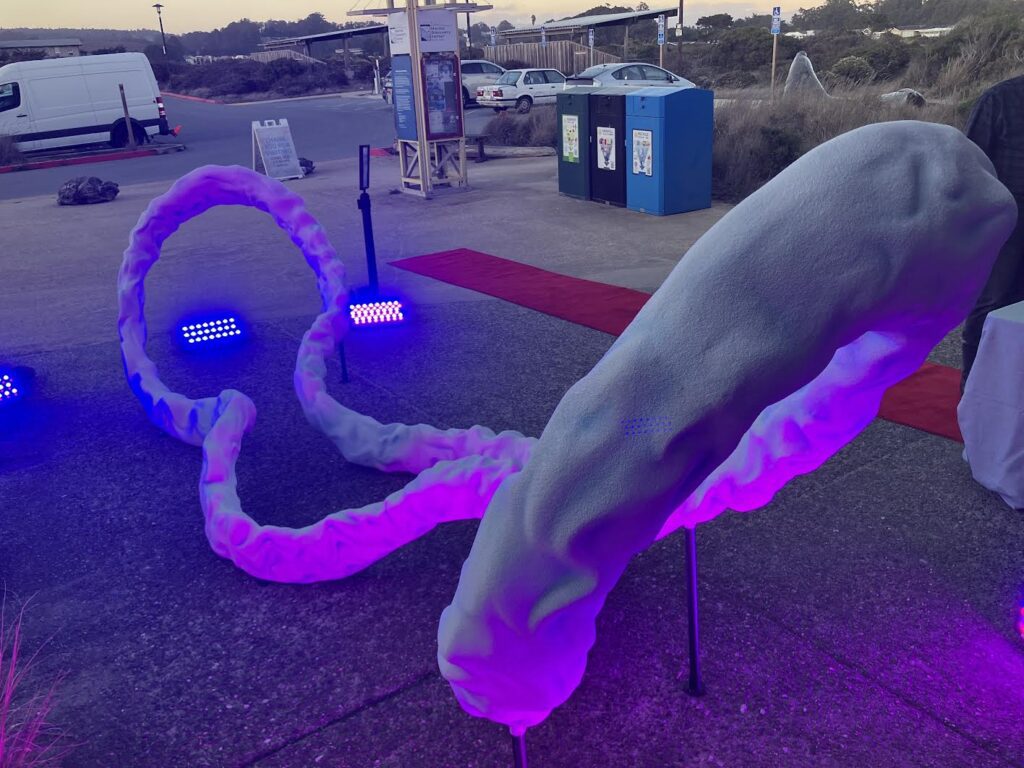Related Topics
At UC Santa Cruz, the environmental humanities encourage us to ask: what happens when we stop treating the natural world as merely a backdrop, resource, or object of study—and instead treat it as a web of interconnected lives?
Here, the focus is not only on the science of ecology or the measurements of climate change, but on the cultural, literary, legal, and ethical dimensions of ecological crises and how communities imagine, respond to, interpret, and live with ecological disruptions. What follows is a closer look at the work of Humanities Division faculty members and how they bring an environmental humanities lens to bear on urgent ecological issues.
Using art to activate climate action

micha cárdenas. Photo by Carolyn Lagattuta
micha cárdenas, a professor of Critical Race & Ethnic Studies, understands that powerful images and poetry can communicate the urgency of climate action in ways that mere statistics or news stories cannot.
cárdenas, an award-winning interdisciplinary artist, used art to sound the warning about global climate tipping points last year in a high-profile artwork The Probability Engine: Atlantic Overturning.
The work debuted last fall at Nuit Blanche, Toronto’s all-night celebration of contemporary art, and made a recent stop at the Seymour Marine Discovery Center on UC Santa Cruz’s coastal campus. She discusses this artwork in her book in progress After Man: Fires, Oceans and Trans Ecologies.
This exhibition reflects her philosophy that artworks can incorporate and yet transcend data sets to change minds and reach vast audiences.
“I ask my students in my classes to use their artwork to envision futures of climate justice,” she said. “Rather than measure the present, or predict the future harms of continuing down our current path of carbon emissions, I ask students to creatively imagine a better future.”
Rethinking our relationship with weeds

Hannah Rachel Cole
Weeds are a much-maligned variety of plant life, but for Hannah Rachel Cole, an Assistant Professor of Literature, these unruly and uncultivated plants—long dismissed as nuisances—reveal alternative ways of living with a transforming planet.
Her ongoing book project, Beyond Monoculture: Botanical Afterlives of Caribbean Plantation Slavery, uncovers how so-called weeds have sustained survival, creativity, and transformation within the ostensibly rigid monocultures of plantation economies.
In doing so, her work highlights how European colonization transformed Caribbean island ecologies by initiating a wave of transplantation from around the world. Over time, these introduced species became central to local cultures, including in food, medicine, and religion from the plantation era to today.
By following weedy plants from colonial plantations to their modern reinventions as “superfoods” and biofuels, Cole shows how these plants have become new sites of extraction in the aftermath of cash crop economies. Her work challenges readers to see weeds not as waste, but as active participants in multispecies histories and futures.
Uncovering hidden histories within botany

Kathleen “Kat” Cruz Gutierrez
At the intersection of history, ecology, and colonialism, Kathleen “Kat” Cruz Gutierrez, Assistant Professor of History, is rewriting how we think about plants—and the power structures that shape our knowledge of them.
Her studies of colonial botany are a sobering reminder that how we see and classify nature has always been political. Gutierrez’s research dives into the botanical archives of the Philippines and broader Southeast Asia, uncovering how colonial-era plant scientists mapped, classified, and extracted the natural world–and more excitingly, how local actors troubled these pursuits.
Her recently published book, Unmaking Botany: Science and Vernacular Knowledge in the Colonial Philippines, reveals how local knowledge systems both resisted and redefined the boundaries of Western science. By tracing how everyday, spiritual, literary, and even culinary relationships with plants endured beneath imperial rule, Gutierrez exposes a more complex history of botany.
“Because I have studied colonial plant scientists, I often wonder if they would be aghast at the state of the world today and the planetary crises we find ourselves in,” she said. “I suspect they didn’t imagine their work in plant systematics or taxonomy to contribute to wide-scale extractive practices, and yet, it did—and sometimes irreparably so.”
What rights do ecosystems have?

Amanda M. Smith
Amanda M. Smith, Associate Professor of Literature, is writing a new book with the support of a National Endowment for the Humanities Fellowship that explores the possibilities and limits of recognizing rivers as victims of armed conflict in Colombia—and considers what it might mean to engage with rivers as legal entities.
“Across Latin America and beyond, Indigenous, Afro-descendant, and peasant communities living in and with liquid ecologies have long understood rivers as beings with whom they interact, rely upon, contend with, respect, and in some cases, fear,” Smith said. “Now, the law is trying to catch up.”
The Nature of Conflict: More than River Rights in Colombia after the Peace Accords contends that giving nonhuman beings legal personhood is valuable, but not enough. These legal frameworks, she argues, must work together with insights from art, literature, and other creative practices of care and cultural expression to protect rivers and the more-than-human world from harm. Smith’s work ultimately asks us to reconsider the importance of art and culture in navigating the turbulent waters of ecosocial conflicts.

